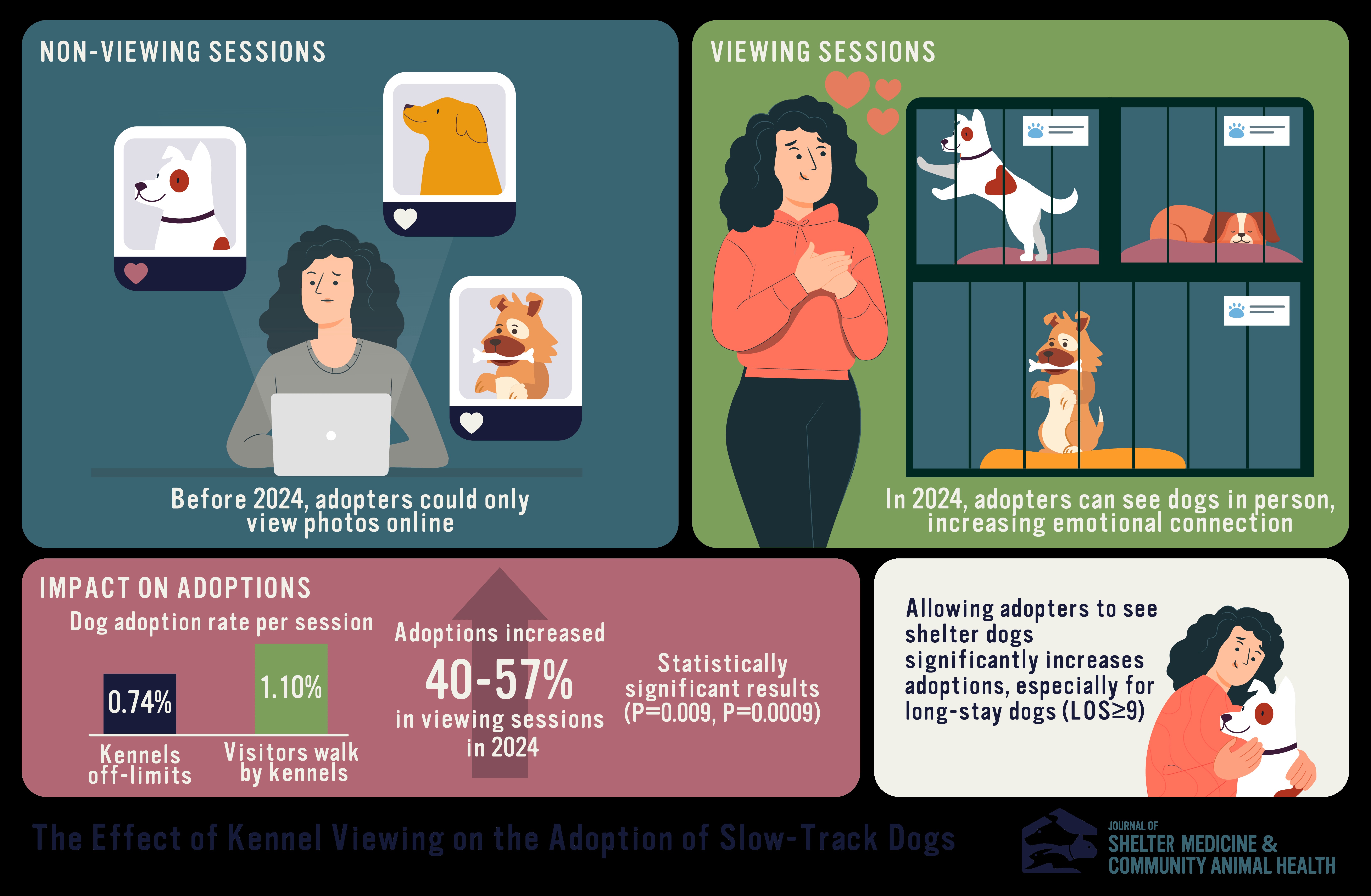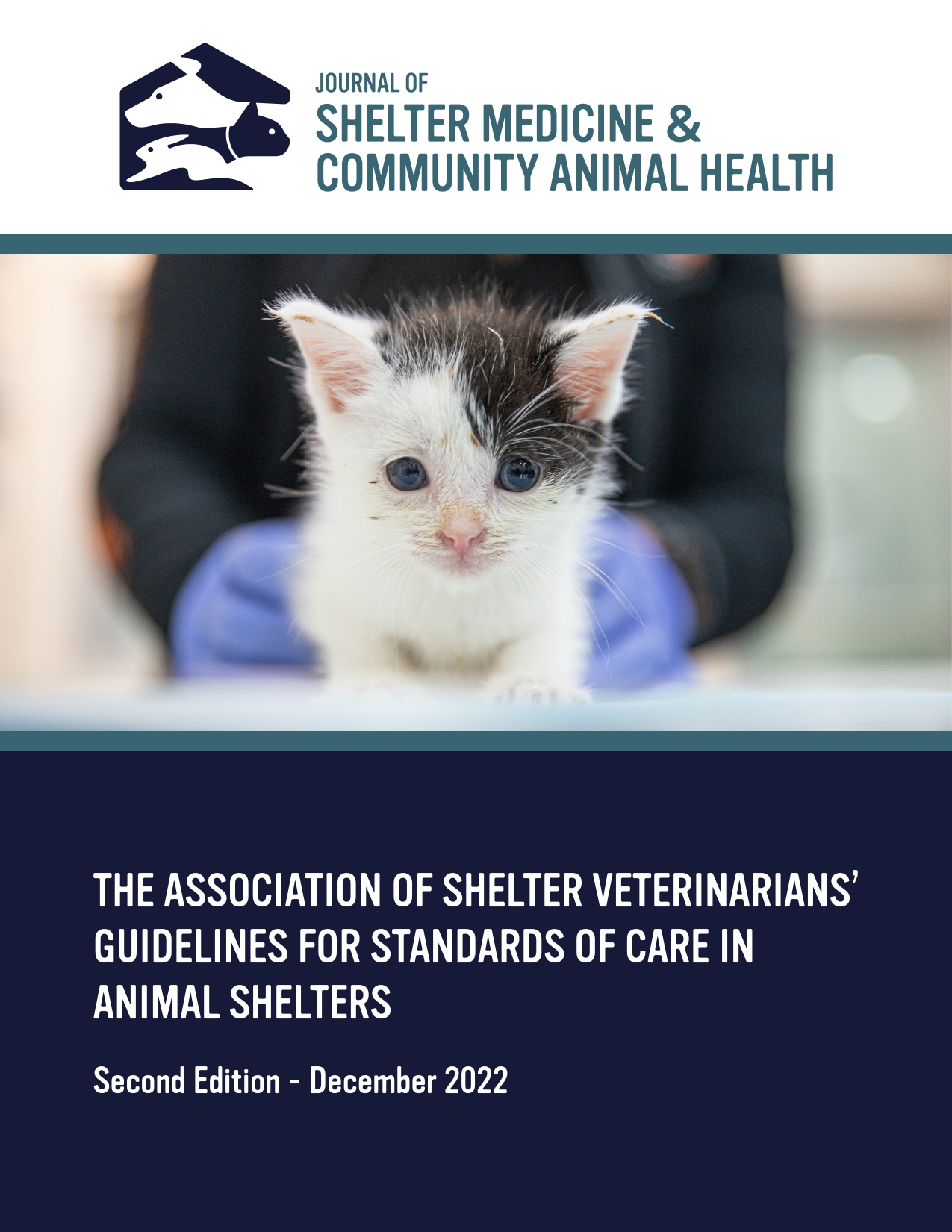The Effect of Kennel Viewing on the Adoption of Slow-Track Dogs
DOI:
https://doi.org/10.56771/jsmcah.v4.123Keywords:
animal shelter, animal adoption, dog adoption, dog kennel, kennel access, kennel viewing, shelter visitor, adoption appointment, length of stay, slow track, fast track, adoption rate, animal inventoryAbstract
The Orange County (California) animal shelter allowed adopters to peruse dog kennels until early 2020 but suspended visitor access to dog kennels during the COVID-19 pandemic. Except for a late 2023 pilot program, the restrictions remained in place through 2023. Then, in January 2024, partial daily viewing sessions were instituted. We study the effect of this change on adoptions of dogs with length of stay (LOS) ≥ 9, who account for 42% of adoptions but 72% of inventory excluding dogs returned to owner. Adoption counts in 2024 are 40% higher than expected in viewing sessions using 2023 as a reference, or 57% higher using 2022 as a reference, and these results are statistically significant (P = 0.009, P = 0.0009, respectively). Adoption rates are computed as a percent of inventory (equivalently, adoption probabilities per animal per session). In the period 2019–2024 but excluding 2020, adoption rates were 1.04% – 1.18% per session (with an average of 1.10%) in viewing sessions versus. 0.68% – 0.80% (with an average of 0.74%) in non-viewing sessions. The evidence suggests that kennel viewing enhances opportunities for increasing adoptions of dogs with LOS ≥ 9.
Downloads
References
1.
Protopopova A, Gunter L. Adoption and relinquishment interventions at the animal shelter: a review. Anim Welf. 2017;26(1):35–48. doi: 10.7120/09627286.26.1.035
2.
Cain CJ, Woodruff KA, Smith DR. Phenotypic characteristics associated with Shelter dog adoption in the United States. Animals (Basel). 2020;10(11):1959. doi: 10.3390/ani10111959
3.
Bradley J, Rajendran S. Increasing adoption rates at animal shelters: a two-phase approach to predict length of stay and optimal shelter allocation. BMC Vet Res. 2021;17(1):70. doi: 10.1186/s12917-020-02728-2
4.
Luescher AU, Tyson Medlock R. The effects of training and environmental alterations on adoption success of shelter dogs. Appl Anim Behav Sci. 2009;117(1–2):63–68. doi: 10.1016/j.applanim.2008.11.001
5.
Mavrovouniotis, ML. Comparison of the number of dog adoptions in a pilot program that restored limited visitor access to Kennels: A community case report. JSMCAH. 2024;3(1):85. doi: 10.56771/jsmcah.v3.85
6.
Newbury S, Hurley K. Population management. In: Miller L, & Zawistowski S. (Editors). Shelter Medicine for Veterinarians and Staff. Blackwell Publishing, Ames, Iowa, 2012:93–113.
7.
R Core Team. R: A Language and Environment for Statistical Computing. Vienna: R Foundation for Statistical Computing; 2024. https://www.R-project.org/. Accessed May 19, 2024.

Additional Files
Published
Issue
Section
License
Copyright (c) 2025 Michael Loizos Mavrovouniotis

This work is licensed under a Creative Commons Attribution 4.0 International License.









